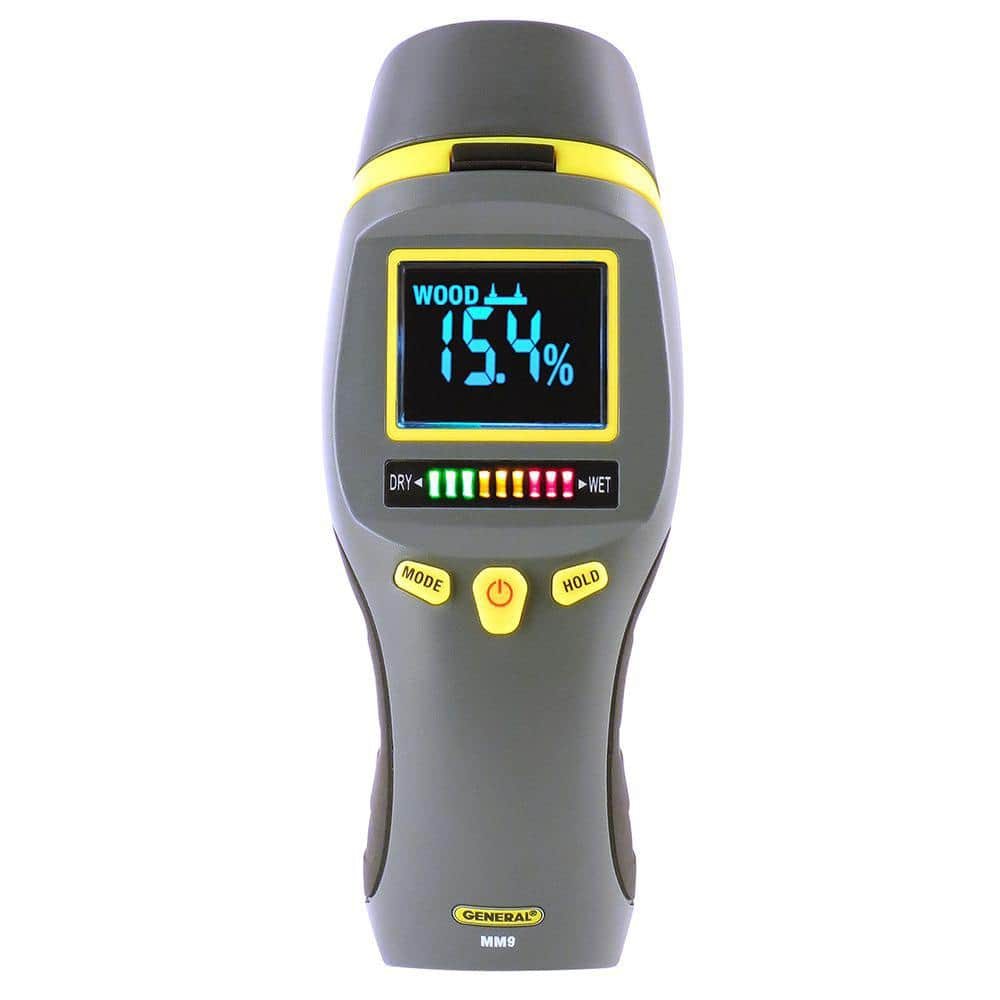The Scientific Research Behind Moisture Meters: Exactly How They Function and Why They're Necessary
The Scientific Research Behind Moisture Meters: Exactly How They Function and Why They're Necessary
Blog Article
Look Into the Globe of Moisture Meters: Everything You Required to Know
In the realm of moisture meters lies a world of accuracy and practicality that usually goes undetected. These devices, while seemingly straightforward, hold a wide range of information that can significantly impact different sectors and applications. Understanding just how moisture meters operate, the different types offered, and their diverse usages can drop light on their value in making sure top quality and effectiveness. By checking out the intricacies of moisture meters, one can discover an important device that goes beyond mere dimension, using understandings that can make a significant distinction in many fields.
Just How Moisture Meters Work
Moisture meters run by gauging the electrical conductivity or capacitance of products to identify the wetness content present. These meters are indispensable tools across various sectors, consisting of woodworking, agriculture, and building. By using various methods such as pin-type or pinless innovation, wetness meters supply precise analyses that help professionals make informed choices.
Pin-type moisture meters function by placing the sharp pins right into the product being checked. On the various other hand, pinless dampness meters utilize electromagnetic signals to check a bigger area without triggering any type of damages to the product's surface area.
Despite the method utilized, moisture meters play a critical role in avoiding issues such as mold growth, structural damage, or product problems created by excess wetness. Understanding just how these meters work is essential for making certain the top quality and integrity of materials in different applications.
Types of Moisture Meters
Given the crucial duty dampness meters play in different markets, it is necessary to recognize the various kinds readily available to specialists for precisely analyzing dampness degrees - Moisture Meter. There are largely 2 main sorts of moisture meters: pin-type and pinless wetness meters

On the other hand, pinless dampness meters utilize electromagnetic sensor plates to scan a bigger location of the product without causing any damages. This kind appropriates for quickly scanning big areas and is frequently used for floor covering, walls, and ceilings. Pinless meters are practical for taking analyses on finished surface areas without leaving any kind of visible marks.
Both types of wetness meters have their benefits and are selected based upon the details needs of the job at hand. Recognizing the distinctions in between these types is vital for professionals to make exact wetness evaluations.
Applications Across Industries
With diverse capabilities, wetness meters discover prevalent application throughout numerous markets, assisting experts in guaranteeing optimal conditions for products and frameworks. In the agriculture field, wetness meters are indispensable for figuring out the dampness web content in grains, seeds, and hay, making sure quality assurance and avoiding mold and mildew development. Construction professionals depend on dampness meters to assess the dampness degrees in structure materials like concrete, drywall, and timber, which is critical for maintaining structural honesty and avoiding concerns like rot or mold. The flooring market uses dampness meters to determine the dampness content in next subfloors prior to installing various flooring, preventing costly damages as a result of excess moisture. Moreover, in the food sector, wetness meters are used to check and control moisture degrees in products such as grains, nuts, and dried fruits to keep freshness and quality. Furthermore, moisture meters play a crucial duty in the remediation and damage assessment industry by helping experts deal with and identify water damage in buildings without delay. Throughout these varied sectors, wetness meters are indispensable devices for guaranteeing the top quality, security, and longevity of different materials and products.
Tips for Making Use Of Wetness Meters
Use the dampness meter's calibration settings to make certain precise analyses when measuring the moisture material in numerous products. In addition, make certain the meter is established to the correct dampness array for the material you are measuring to obtain the most precise results.
When making use of Go Here a pin-type dampness meter, place the pins to the suitable deepness advised for the material being checked. This makes certain that the wetness analyses are drawn from the correct depth within the product, providing an extra accurate depiction of its wetness web content. For pinless dampness meters, bear in mind to preserve proper contact with the product's surface to obtain reliable analyses.
Frequently inspect and replace the batteries in your dampness meter to stop inaccurate readings due to reduced power. Store the meter in a completely dry and risk-free area when not in usage to extend its life-span and maintain its accuracy. By adhering to these pointers, you can take full advantage of the performance of your moisture meter and obtain specific wetness web content measurements throughout different products.
Maintenance and Calibration
To make certain the precision of dampness web content dimensions, normal maintenance and calibration of the moisture meter are essential steps in its correct performance. Calibration readjusts the dampness meter to make certain that it supplies regular and reputable results.
Calibration needs to be performed occasionally, particularly if the dampness meter is made use of often or in crucial applications where precise measurements are needed. By keeping and calibrating the wetness meter regularly, customers can trust the precision of the dampness material dimensions gotten.
Verdict

Finally, dampness meters play a crucial role in different sectors by precisely gauging the dampness content of products. Comprehending exactly how these tools function, the various kinds available, and proper upkeep and calibration are essential for acquiring dependable results. Whether in building and construction, farming, or manufacturing, using dampness meters helps guarantee quality control and performance in processes.

In verdict, dampness meters play an important duty in different sectors by properly gauging the wetness content of products.
Report this page